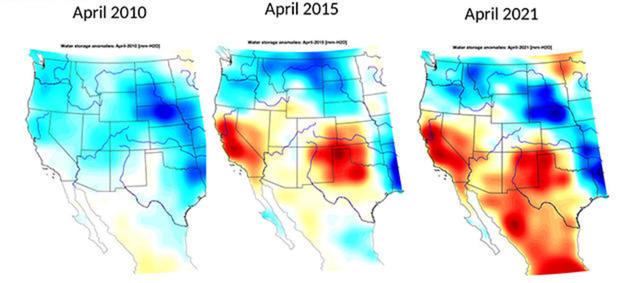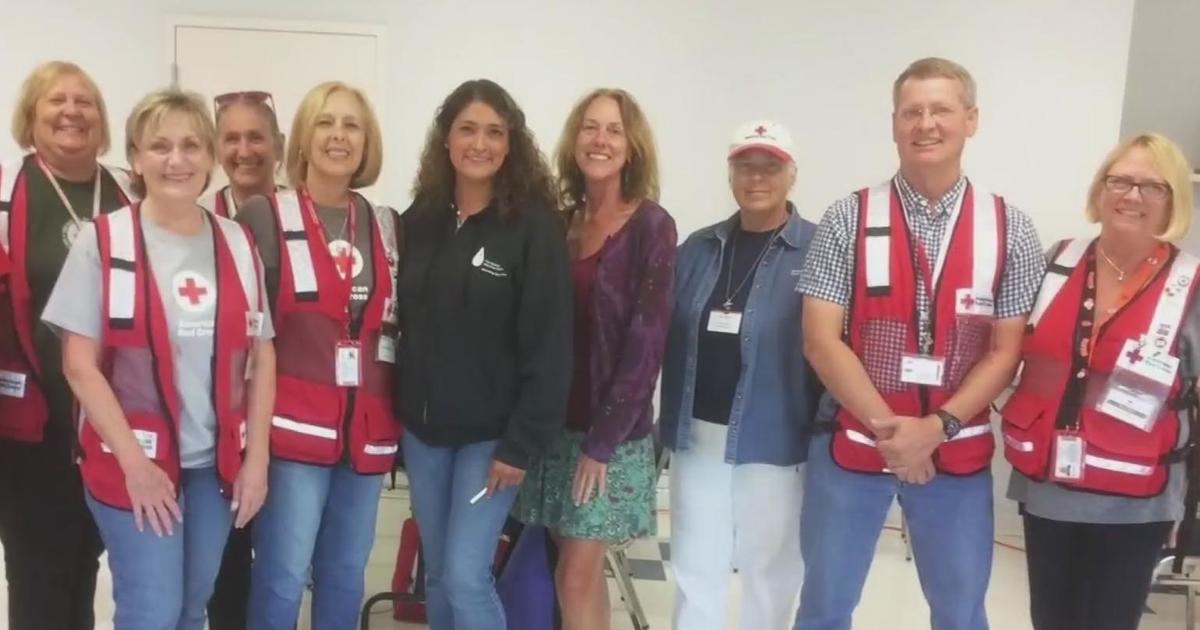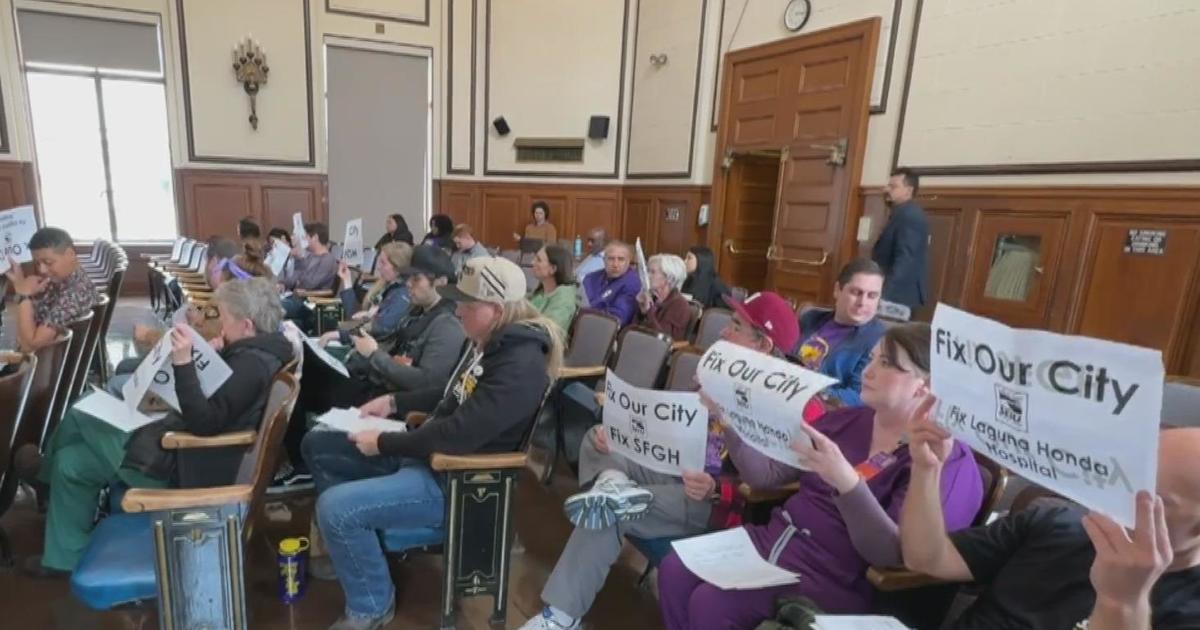Megadrought Poses 'Existential' Crisis in California and the West
FIREBAUGH Calif. (CBS News) -- The American West was once seen as a place of endless possibilities: grand vistas, bountiful resources and cities that somehow grew out of deserts. Now, manifest destiny has become a manifest emergency.
A scorching drought made worse by climate change is draining reservoirs at an alarming pace, fueling massive wildfires and deadly heat waves and withering one of the most important agricultural economies in the country.
"I'm really concerned, I'm really worried," said Joe Del Bosque, who has been growing melons and other crops in California's Central Valley since 1985. He has weathered droughts before but nothing quite like this.
He showed CBS News correspondent Ben Tracy a field of dirt that he has left fallow because there's not enough water to plant a crop there this summer.
Tracy asked, "How much of your land have you left unplanted this year?"
"About a third," he replied. "That's significant. If that water doesn't get here, we will start to lose our crops. Some of our crops will probably die."
Del Bosque's water comes from the San Luis Reservoir west of Los Banos, which is at just 30 percent of its capacity. The state has now cut water deliveries to many of its farmers who supply much of the nation's fruits, nuts and vegetables.
Del Bosque paid for water he now can't get.
Tracy asked, "I'm sure you talk to your neighbors, to farmers up and down the valley. What are people saying?"
"Well, a lot of them are worried and a lot of them are mad," Del Bosque said. "If we have no water, we can't farm. If we get no water next year, these trees won't get water. They're gonna die."
This devastating drought is not confined to California; it's impacting nearly all of the West.
The red and brown colors on this map are what the government calls "severe and exceptional drought."
"This drought is really bad; it's one of the worst handful of years since the year 800 A.D.," said Park Williams, a hydro-climatologist at UCLA. He said this is not just one long, hot dry summer but what scientists call a "megadrought."
"This is really the 22nd year of a long drought that began in the year 2000," Williams said.
He and his colleagues know this from studying the rings on trees, which show how much they grow in any given year.
"The last 22 years actually rank as the driest 22-year period in at least 1,200 years, based on tree-ring records," Williams said. "Humans now are contending with a water limitation crisis in the West that modern society in this region has not yet had to contend with."
We've long known the limitations of the arid West. In the mid-1800s the U.S. government sent geologist John Wesley Powell to survey the Western U.S. water supply and bring back recommendations.
Williams says Powell "Warned that the West did not have enough water for a really widespread population and we kind of bent the rules along the way when we started figuring out how to dam up the Colorado River and divvy it up to the Western states."
Hoover Dam, an engineering marvel, was thought to be a concrete solution. It harnessed the mighty Colorado River and created Nevada's Lake Mead, still the nation's largest reservoir. This water supply is what made the growth of Western cities such as Los Angeles, Phoenix and Las Vegas possible and allowed us to create some of the richest farmland in the country.
But the predicted water supply from the Colorado River was based on 20 abnormally wet years at the beginning of the last century. Now, 40 million people in seven states depend on it.
"We did it. We built it. We've become reliant on it," said Pat Mulroy, former head of the Southern Nevada Water Authority. "So, we have to deal with what we have."
Tracy spoke with Mulroy along the shore of Lake Mead, which has sunk to its lowest level ever. In the year 2000, the water came up to the top of Hoover Dam. During the megadrought, the lake has dropped more than 140 feet.
"When it loses this much water, to me, that is an enormous wake-up call," Mulroy said.
Next month the federal government is expected to make an unprecedented decision: declaring a first-ever shortage on the river, triggering cuts to the water supply in Arizona and Nevada that will cost some farmers 25 percent of their water.
"It's a tipping point," Mulroy said. "It's an existential issue for Arizona, for California, for Nevada. It is a river system and a water supply that cannot fail."
Tracy asked, "Without this, are places like Phoenix and Las Vegas and Los Angeles possible?"
"No, absolutely not. They're not possible. At the end of the day, this is gone and those cities and that economic base is in dire jeopardy."
What the West needs more than anything is snow. Snowpack in the mountains melts throughout the summer and flows into reservoirs.
"In the West, snow is like our battery -- it's where we store water," said J.T Reager, a water scientist at NASA's Jet Propulsion Laboratory. "Now, we're getting less snow. The snow season is markedly shorter."
"Is this something that is caused by climate change or something that's just made worse by climate change?" Tracy asked.
"I think it's something that's definitely made worse by climate change," Reager said.
Climate change is making the West hotter and drier, which means more rain than snow is falling and much of that is evaporating.
"Over the long-term, what we're seeing with our satellite data is a picture of continual drying," Reager said.
A NASA satellite is documenting the loss of water stored in the mountains, reservoirs and underground aquifers. "These are some images that we've taken from the satellite mission from April 2010, 2015 and 2021, showing this steady drying progression of water in the West," Reager said.
"Given how severe this drought is," asked Tracy, "how long would it take to recover from something like this?"
"We would need a solid decade of really wet years, which is probably just not gonna happen," he replied.
Joe Del Bosque has already let 70 of his farm workers go and isn't sure how long his farm will survive if the drought drags on.
Tracy asked, "If you were starting all over, knowing what you know about this climate now, would you do this?"
"I don't know," he replied. "It was like a dream for me to be able to do this. Because I was the son of farm workers. I have a lot of people that depend on me. There's hundreds of people working in the fields, picking melons, that are people just like my ancestors, that came here, worked hard to try to make a living for their kids, so their kids could go to college like I did. And this is gonna end their dream, too."
WEBLINKS
Del Bosque Farms, Firebaugh, Calif.
Park Williams, HyFiVeS Research Group, UCLA
J.T. Reager, Jet Propulsion Laboratory, California Institute of Technology
U.S. Drought Monitor, National Drought Mitigation Center, University of Nebraska-Lincoln





